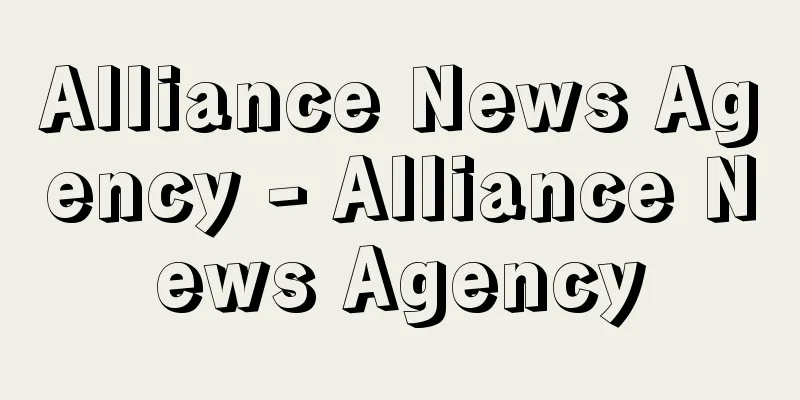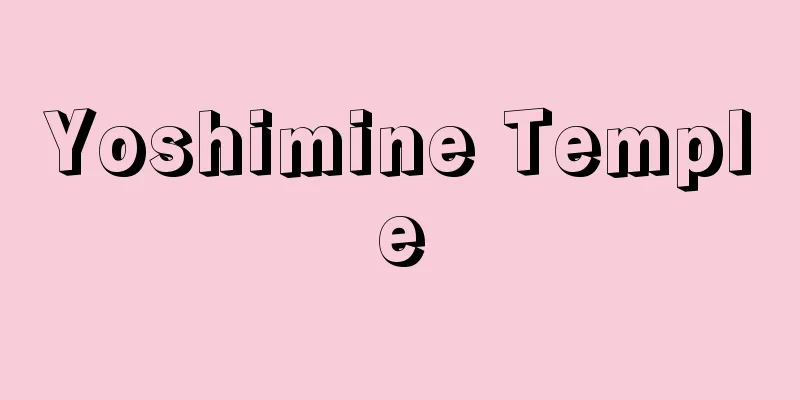Alliance News Agency - Alliance News Agency

|
Japan Telegraph Communication Agency was established on January 1, 1936 (Showa 11). It was the result of a merger between the two major news agencies at the time, Japan Telegraph Communication Agency (established in 1901, now Dentsu) and Newspaper United Federation of Companies (established in 1926), and was the result of a combination of the vision of Iwanaga Yukichi and Furuno Inosuke, who aimed to gain autonomy for communications and establish a national news agency, and the government's intention to unify and strengthen overseas propaganda and unify domestic public opinion since the Manchurian Incident. At first, the merger negotiations were difficult due to opposition from Dentsu, but the government first launched a new news agency based on United Federation of Companies and forced the merger, and finally, on June 1, Dentsu's communications department joined Domei, completing the government's intention. The government granted the Domei special privileges, such as the use of telegraphs and telephones, as well as broadcasting and radio, and after the start of the Second Sino-Japanese War, as Japan's influence spread from mainland China to various parts of Southeast Asia, the Domei expanded its area of operation, setting up the North China General Bureau (Beijing), Central China General Bureau (Shanghai), South China General Bureau (Canton), and South China General Bureau (Singapore), and for a time it played an active role as an international news agency. However, after Japan's defeat in 1945 (Showa 20), the Domei, which cooperated with the government and expanded its influence together with the military, lost its special privileges when the Supreme Commander for the Allied Powers (GHQ), which had occupied Japan, issued an order to "separate newspapers from the government." On September 14, the company was ordered to suspend operations (which was lifted after 19 hours), and as domestic newspapers also began to move to exclude the Domei, the Domei voluntarily dissolved on October 31, and on November 1, Kyodo News and Jiji Press were separated to form the new company. [Akihiko Sunohara] [Reference item] | |Source: Shogakukan Encyclopedia Nipponica About Encyclopedia Nipponica Information | Legend |
|
1936年(昭和11)1月1日に設立された国家代表通信社。通信の自主権獲得とナショナル・ニュース・エージェンシーの設立を目ざす岩永裕吉(ゆうきち)、古野(ふるの)伊之助の構想と、満州事変以来、対外宣伝の統一強化ならびに国内世論の統一を図る政府の意図が合体して、当時の二大通信社日本電報通信社(1901創立、現電通)と新聞聯合(れんごう)社(1926創立)を合併、成立した。初めこの合併交渉は「電通」側の反対にあって難航したが、政府は、まず「聯合」を母体に新通信社を発足させ、合併を強要したので、ついに6月1日「電通」通信部も「同盟」に合流、政府の意図は完成した。「同盟」は政府から、電信電話の利用ならびに放送無線使用などの特権を与えられ、日中戦争開始後、中国大陸から東南アジア各地に日本の勢力が伸びるとともに、そのエリアを拡大、北支総局(北京(ペキン))、中支総局(上海(シャンハイ))、南支総局(広東(カントン))、南方総局(シンガポール)を設置して、一時は国際的通信社として対外的に活躍した。しかし、政府と協力し、軍とともに勢力を拡大した「同盟」は、45年(昭和20)敗戦になると、日本に進駐してきた連合国最高司令部(GHQ)の「新聞の政府からの分離」指令により、その特権を奪われた。9月14日には業務停止命令を受ける(19時間で解除)など厳しい処置を受けたほか、国内の新聞社のなかからも「同盟」排除の動きが出てきたため、10月31日、自発的に解散、11月1日、新しく共同通信社と時事通信社が分離して創立された。 [春原昭彦] [参照項目] | |出典 小学館 日本大百科全書(ニッポニカ)日本大百科全書(ニッポニカ)について 情報 | 凡例 |
>>: Alliance City War - Alliance City War
Recommend
Genus Plumage - Plumage
…There are about 180 known species of the Limoniu...
Blue water - Blue water
A soft annual plant of the Urticaceae family that ...
Cypripedium guttatum (English spelling) Cypripediumguttatum
… [Ken Inoue]. … *Some of the terminology that me...
Kanoko Okamoto - Kanoko Okamoto
Novelist and poet. Born in Tokyo on March 1, 1889...
Household reform - Household reform
The maintenance and development of a family's ...
President of the House of Representatives - President of the House of Representatives
...One of the five general directors appointed by...
Vibration hazard - Shindo Kougai (English)
Pollution caused by vibrations from factories, con...
Aureomycin
(Aureomycin) An antibiotic. Trade name for chlorte...
Lymphedema
...In addition to plasma-derived proteins, lymph ...
Random - Shindai
〘noun〙 (Perhaps a variation of "shintai"...
Lederer, EPF (English spelling) LedererEPF
...American female journalist. Her real name is E...
Sachsenhausen
...It was divided into an upper town, Oberstadt, ...
Douage - Tossing someone up
A large group of people gather together and throw...
Illegitimate Child - Shiseiji
(Original title, French: Le Fils naturel ) A play ...
Vallabha - Vallabha (English spelling)
He was an Indian philosopher of the Vedanta schoo...









